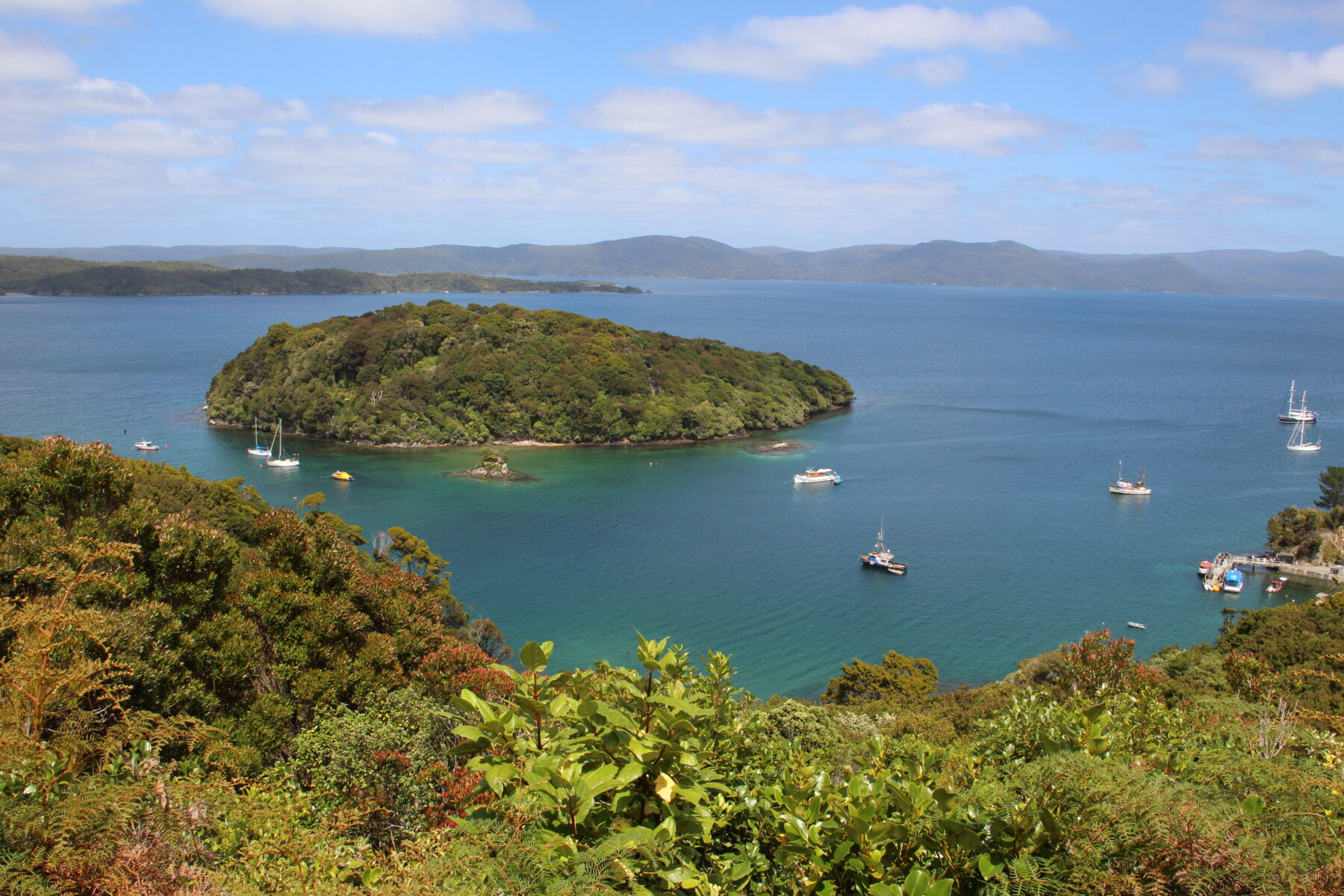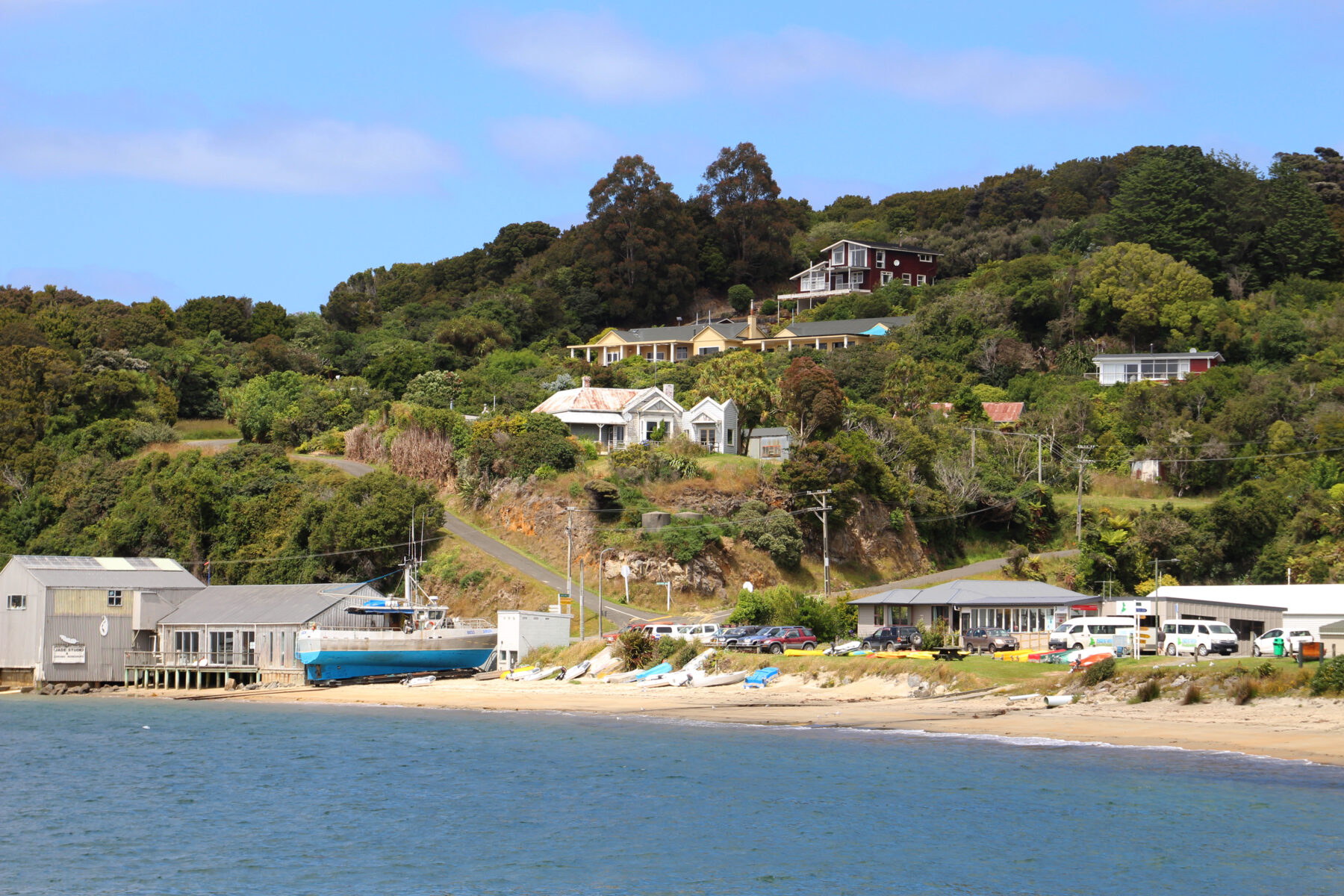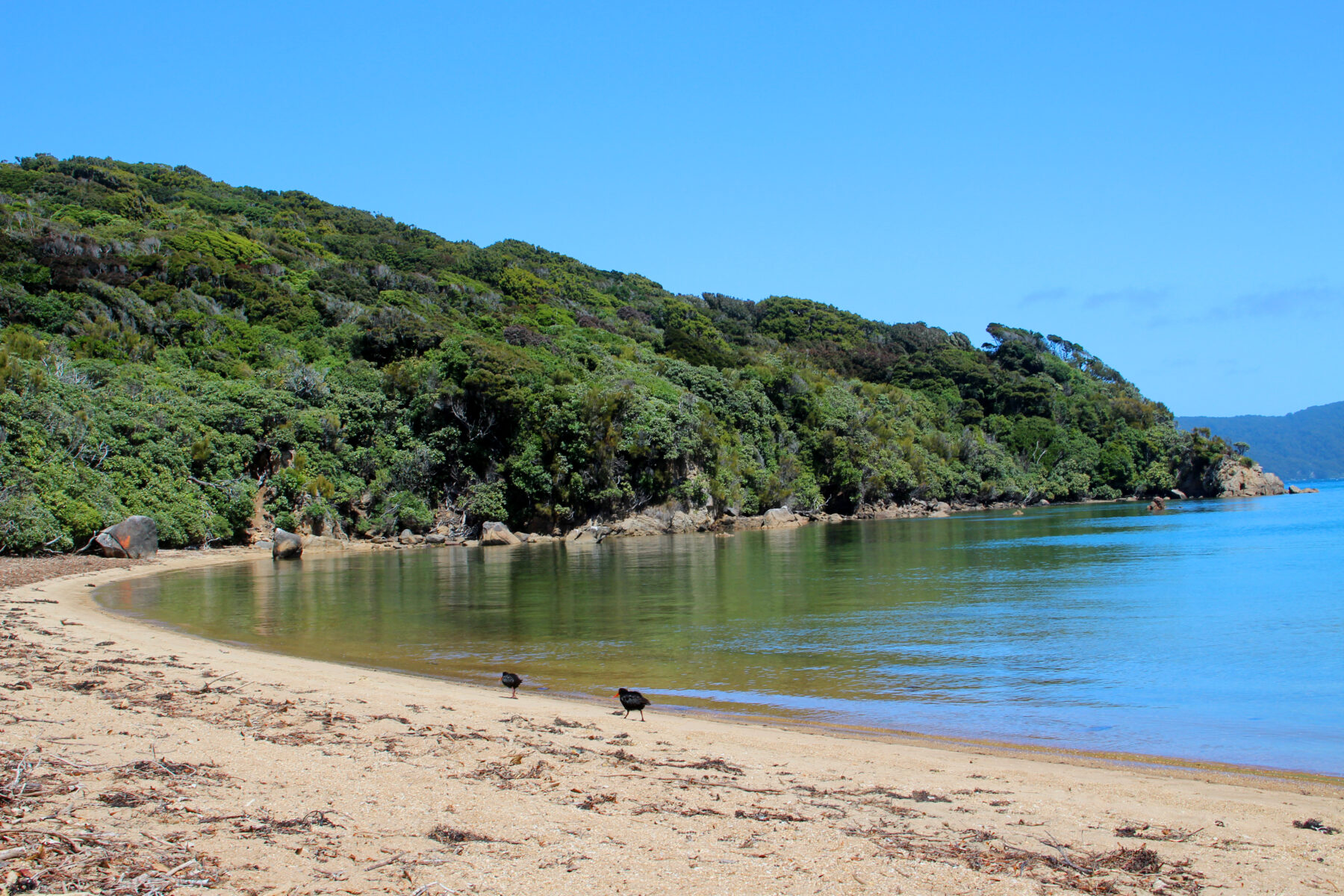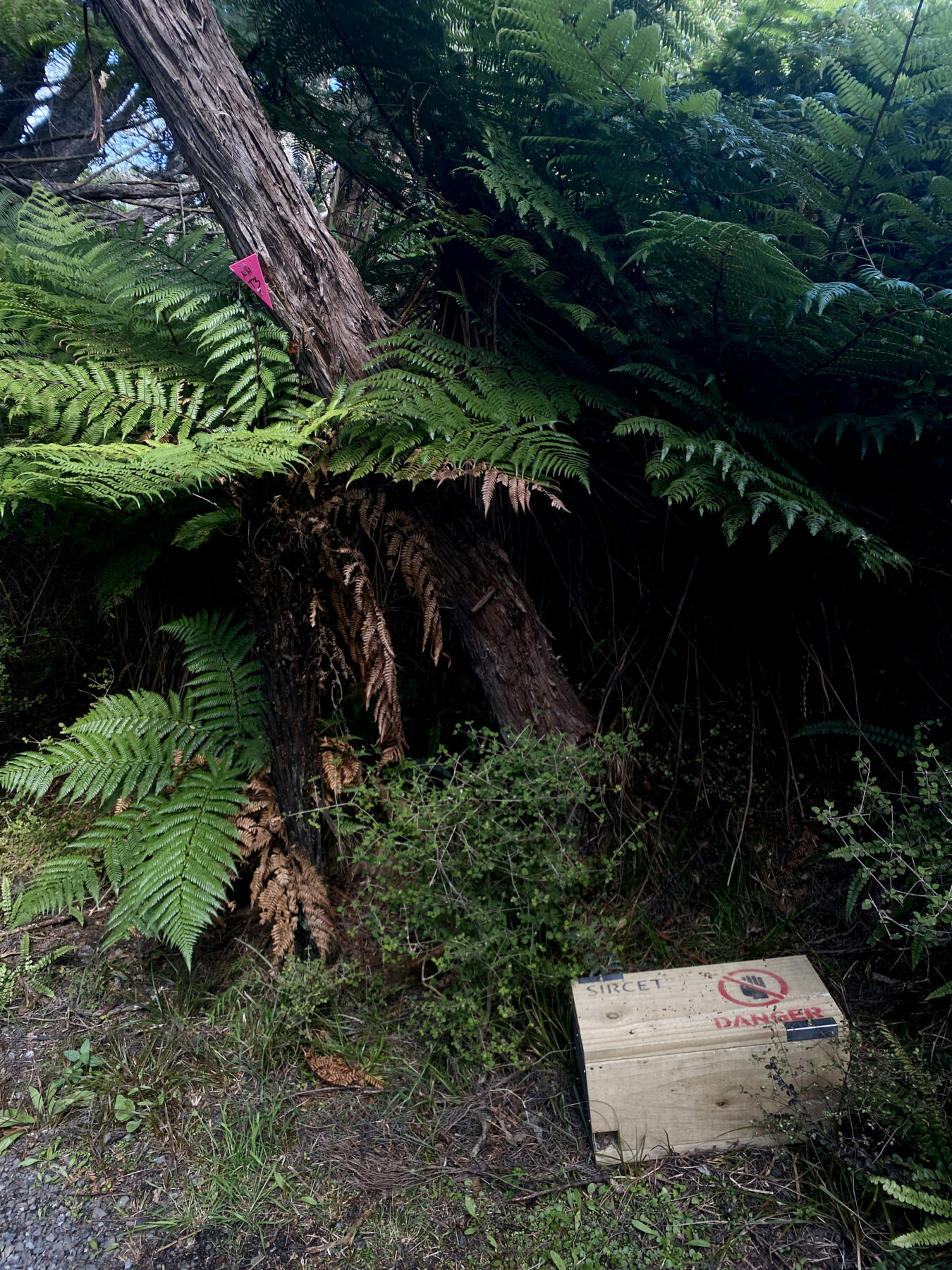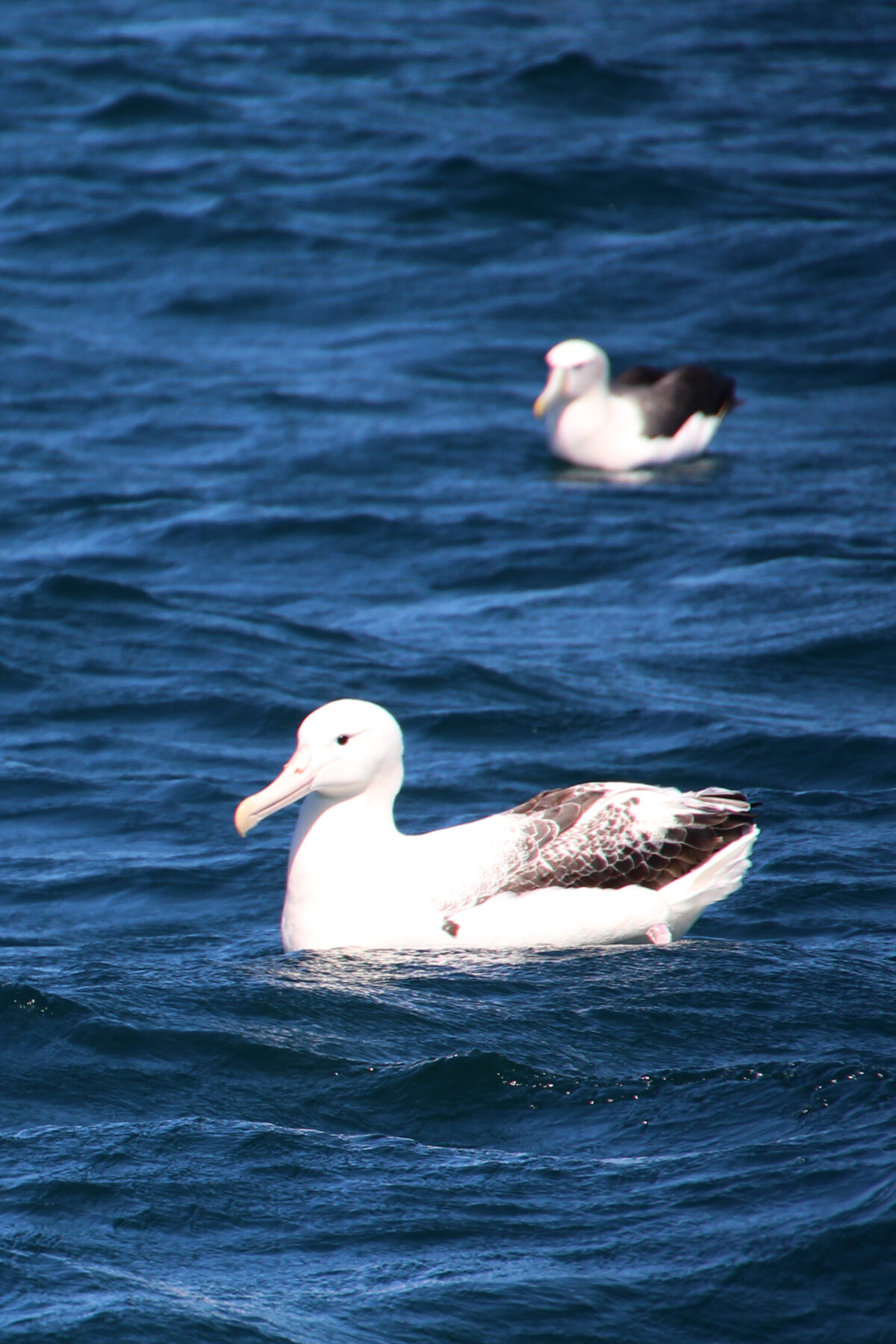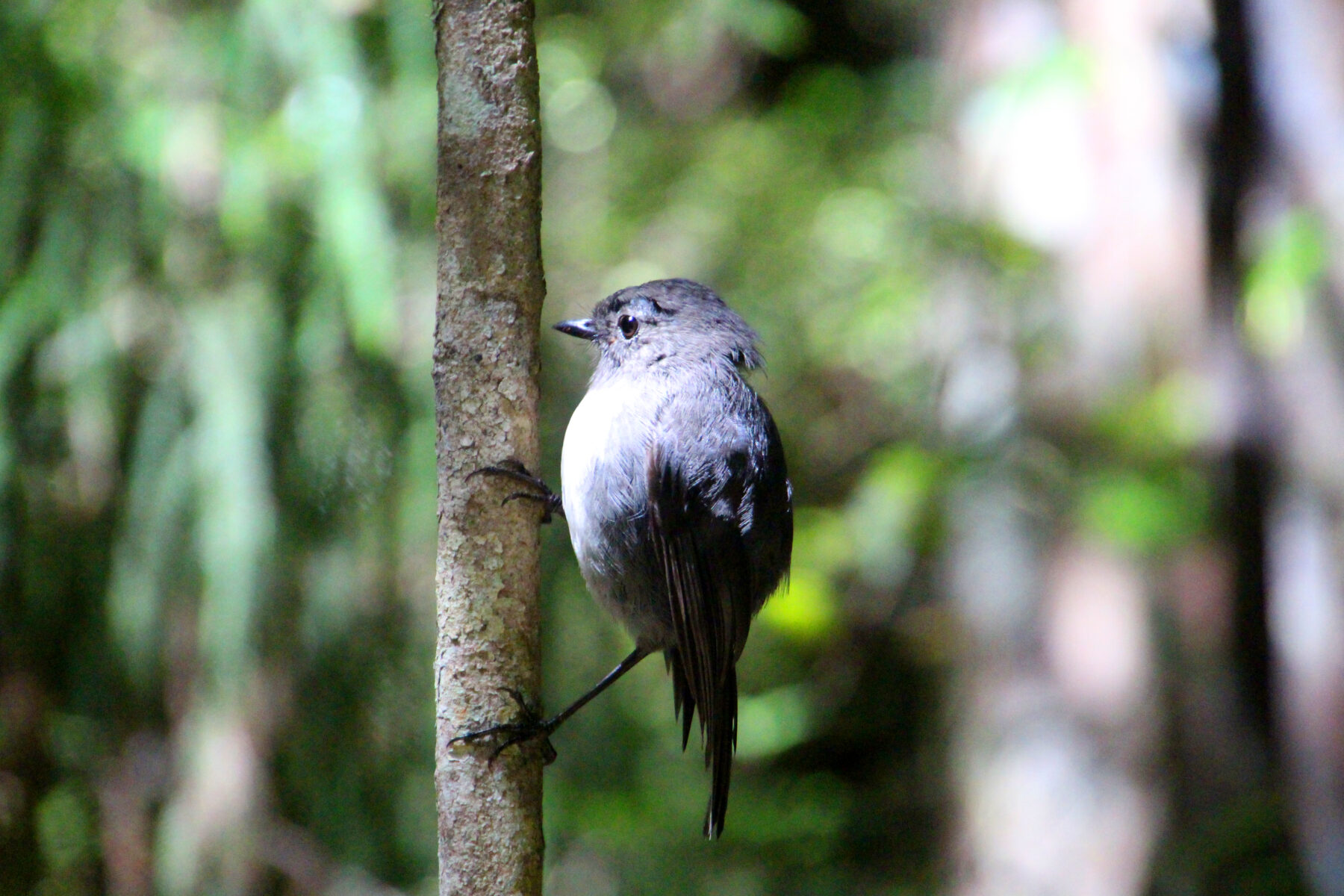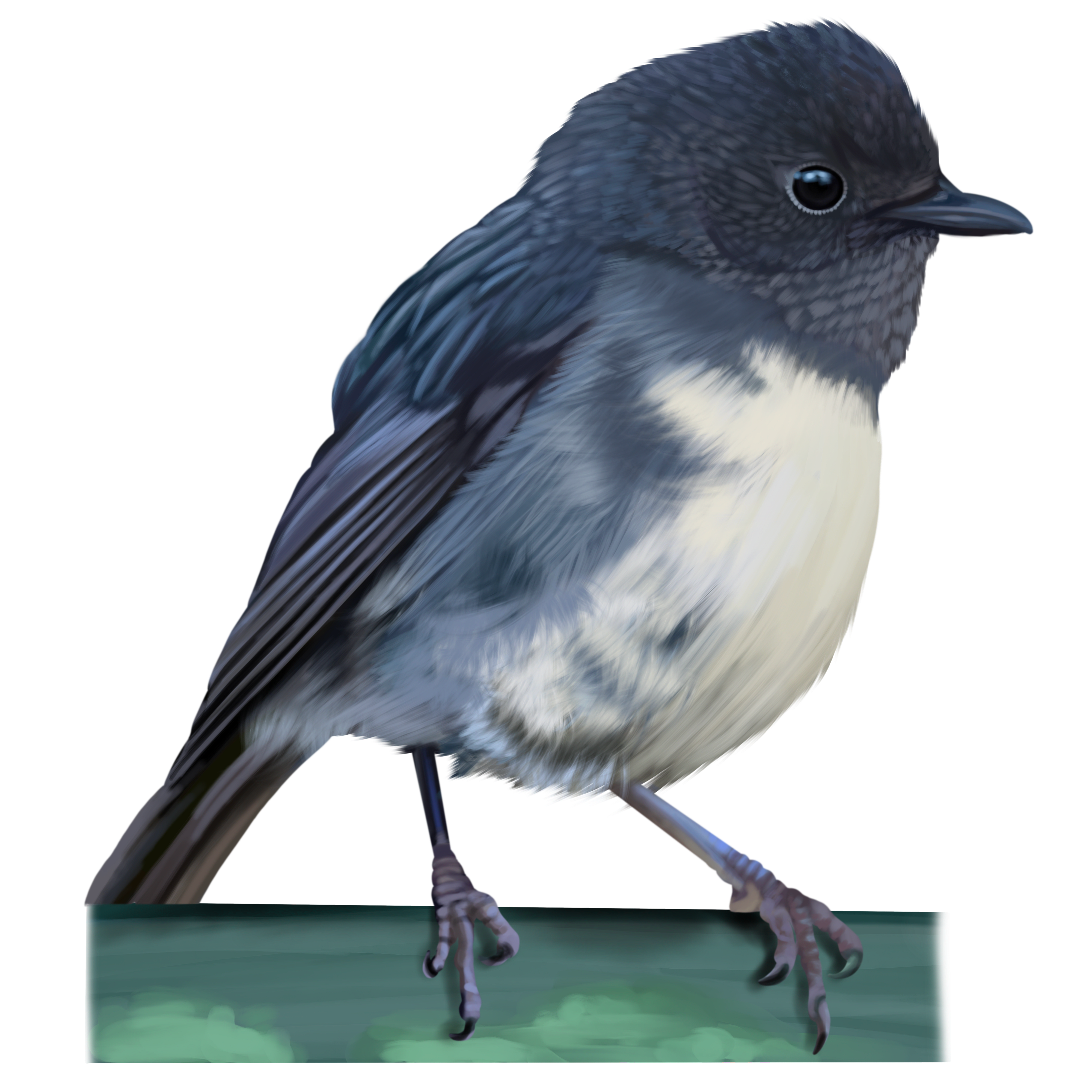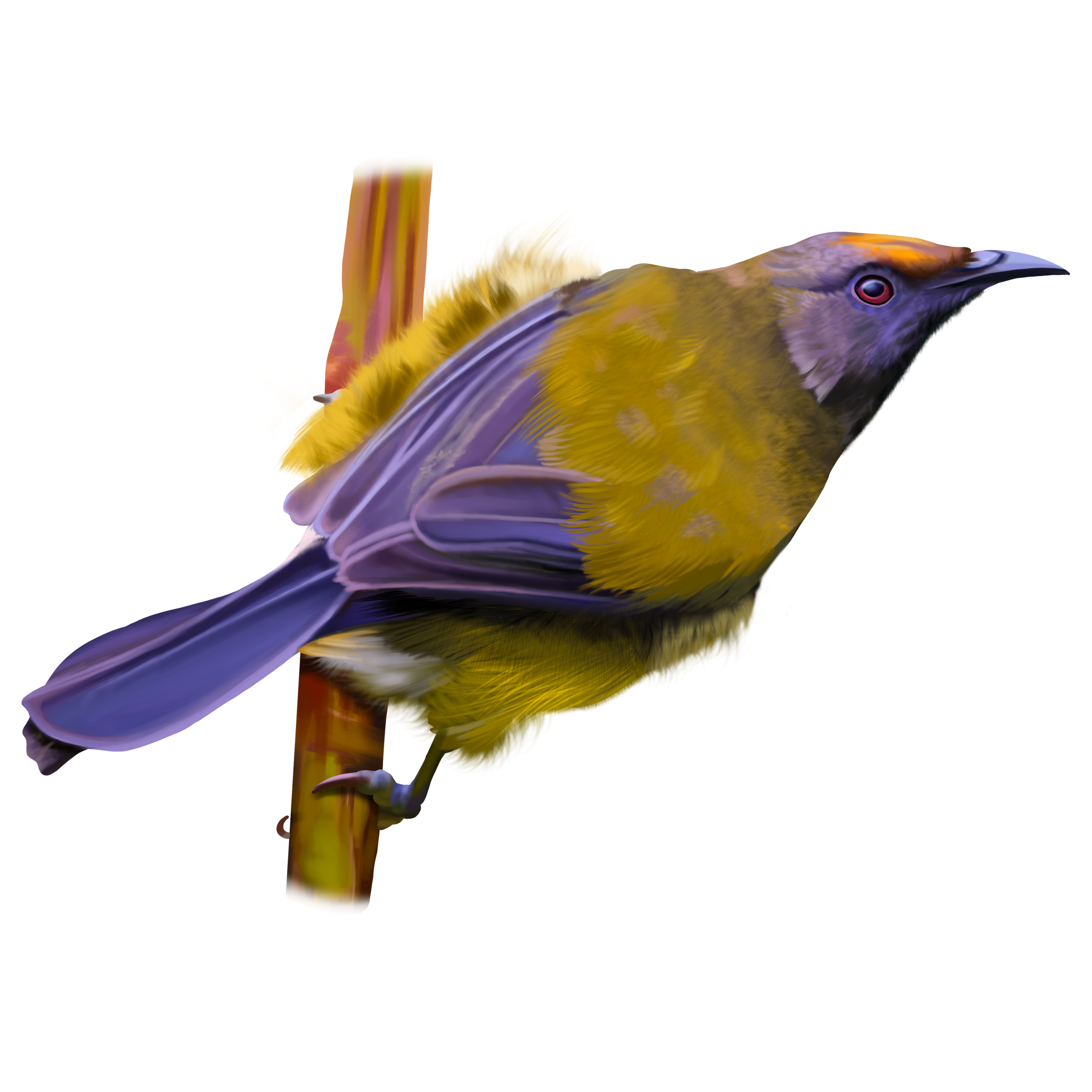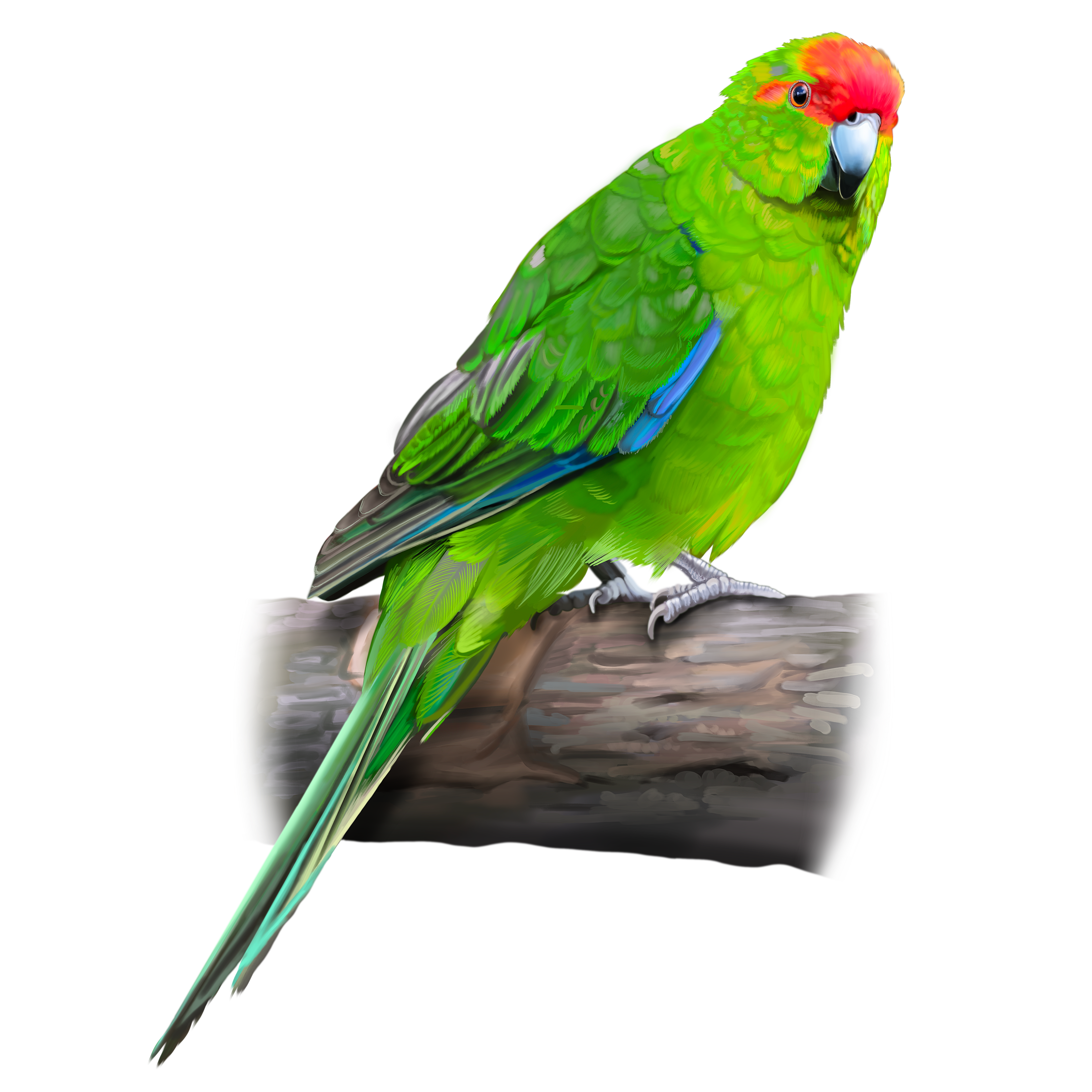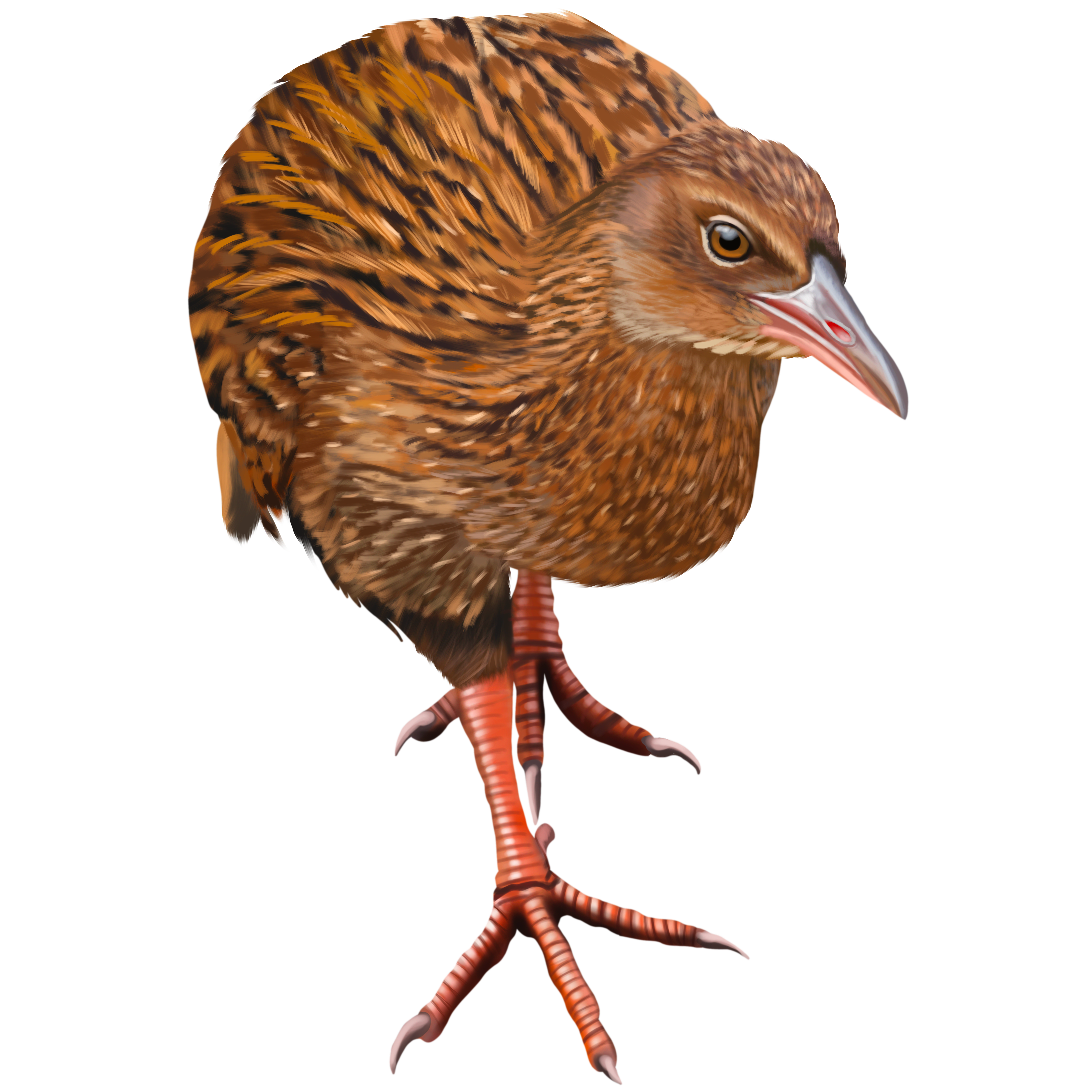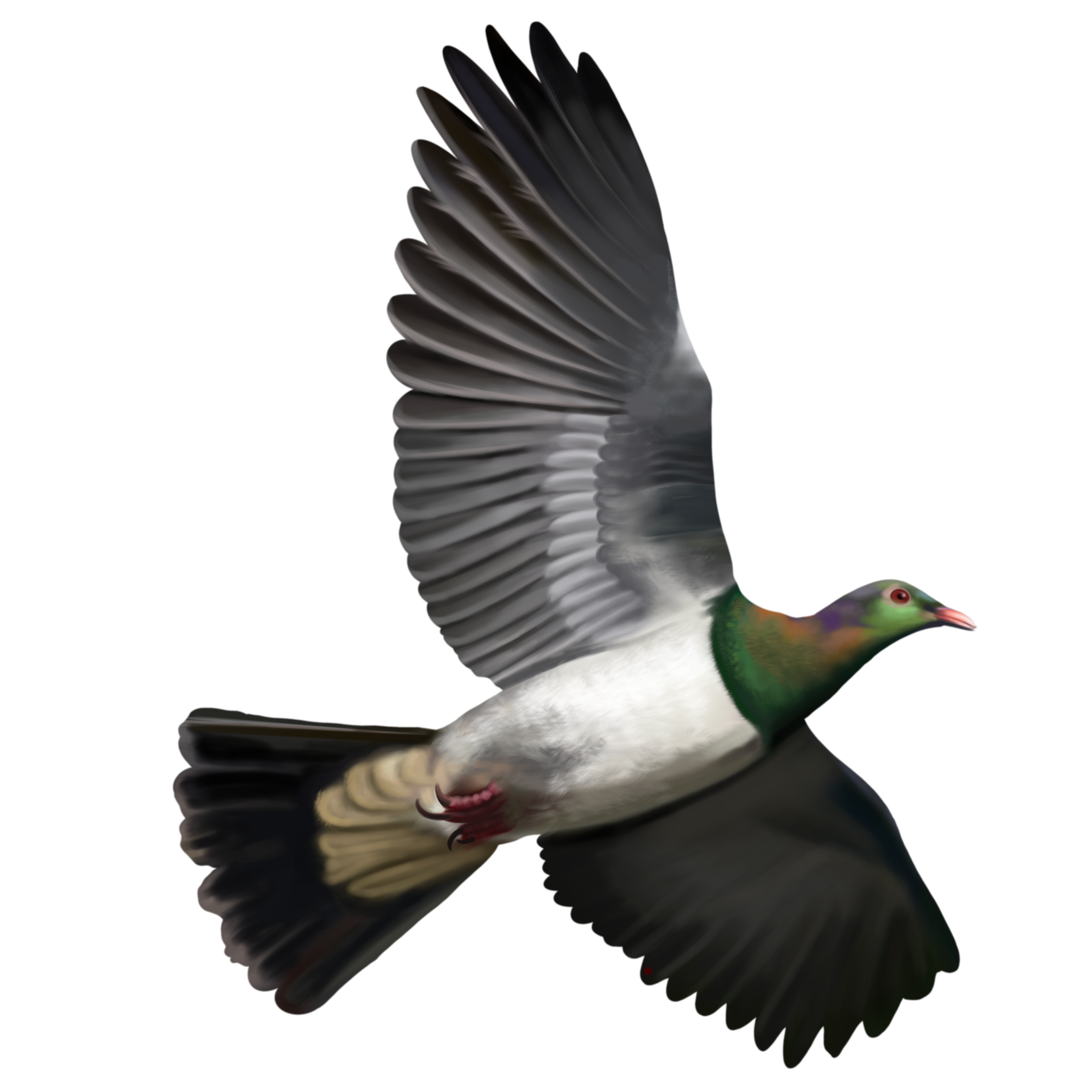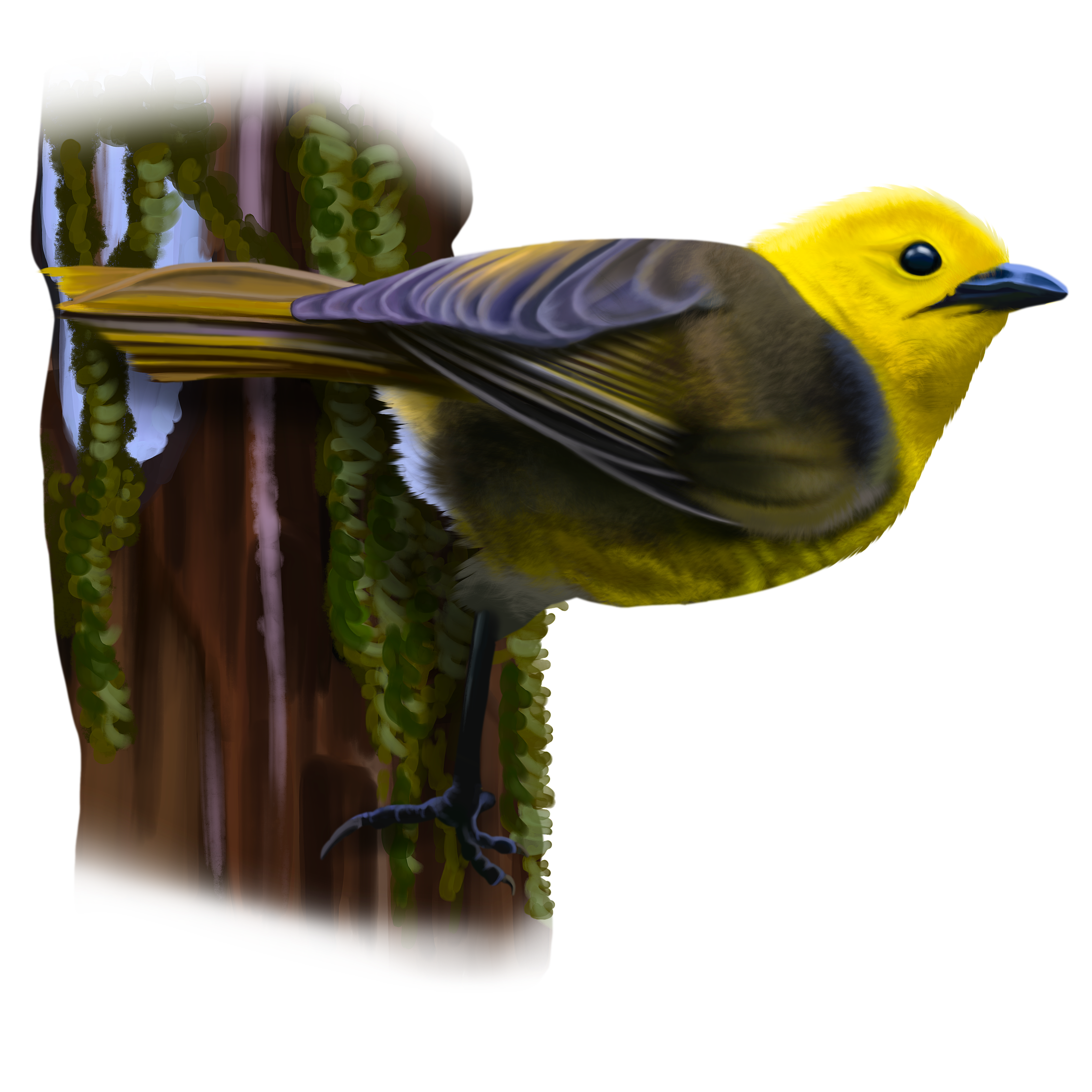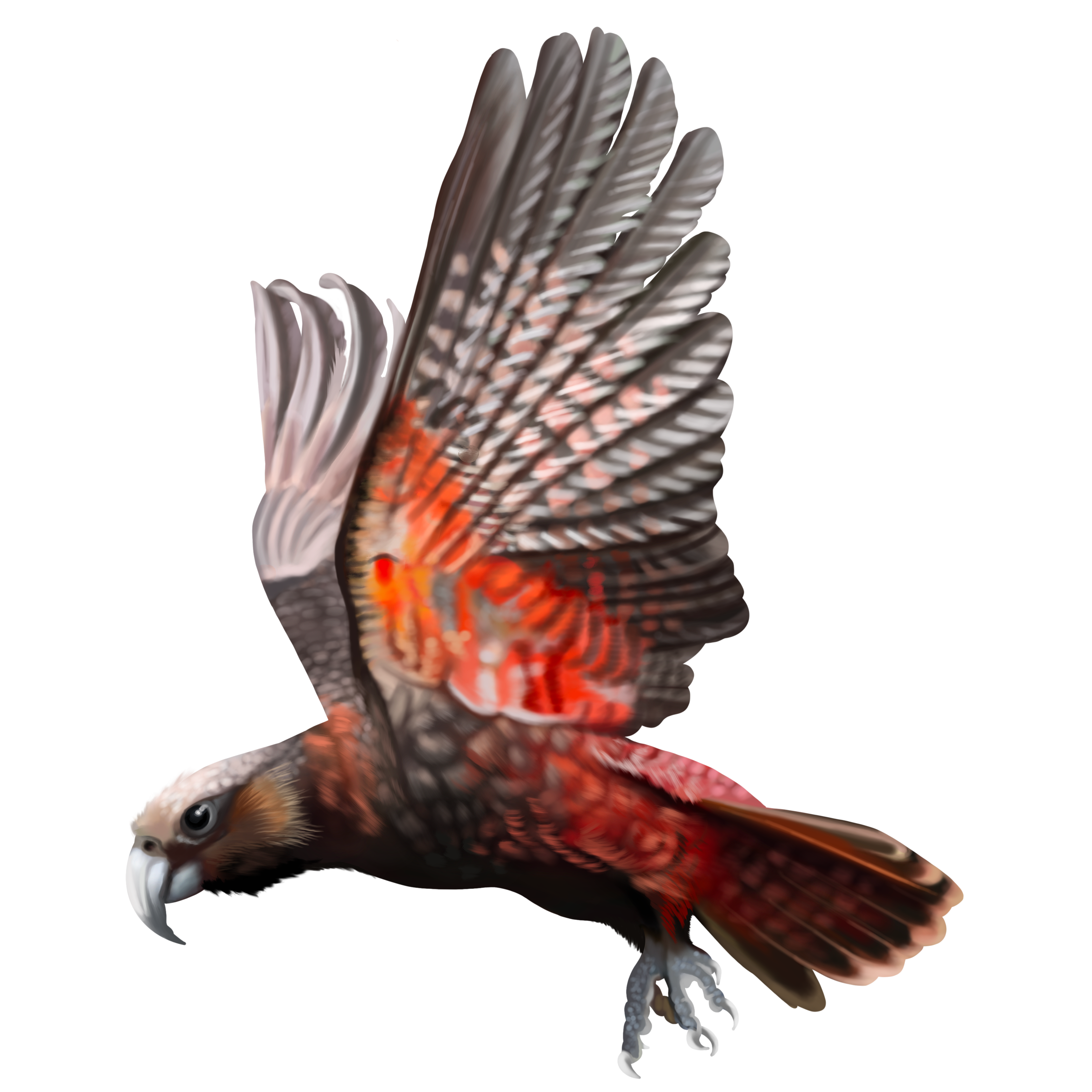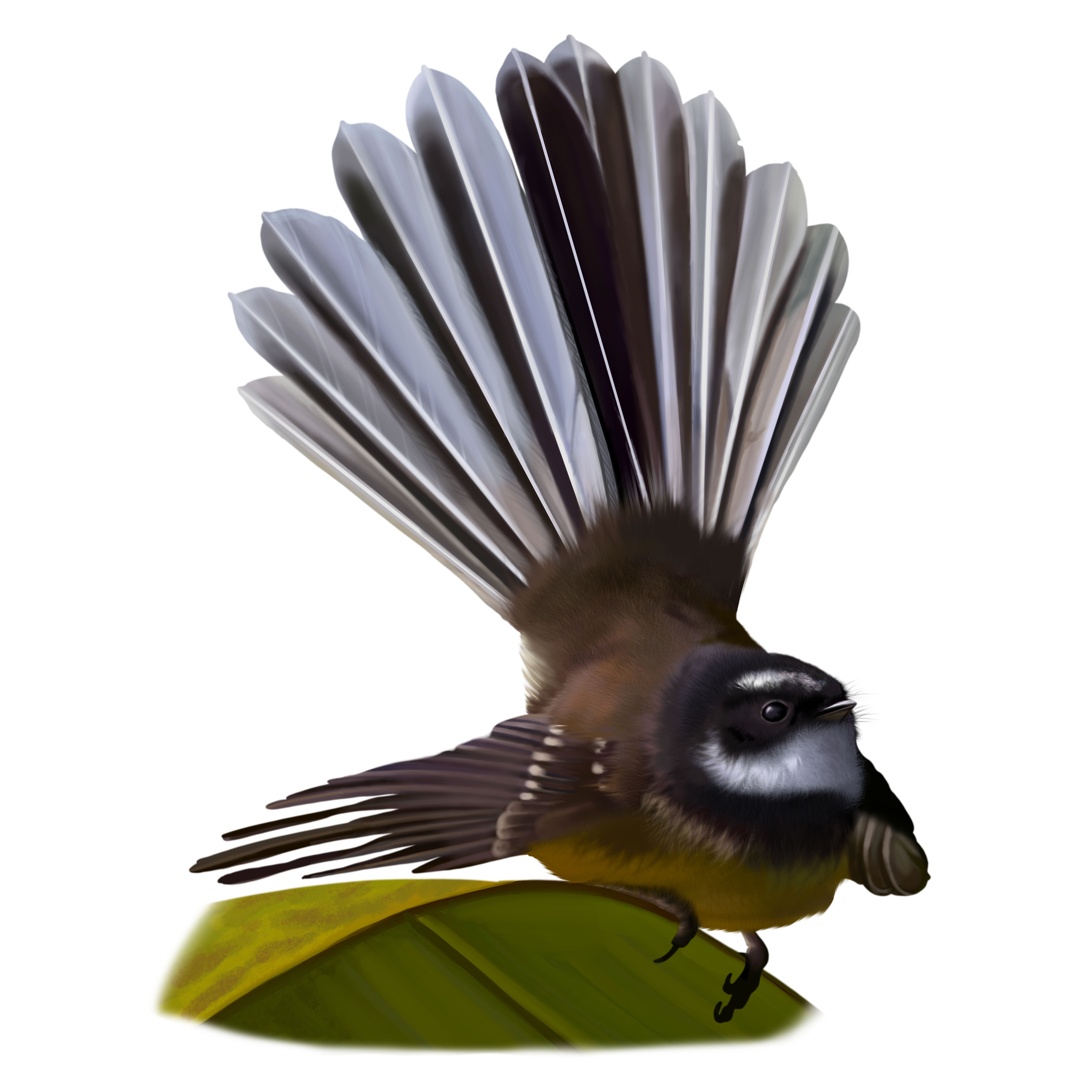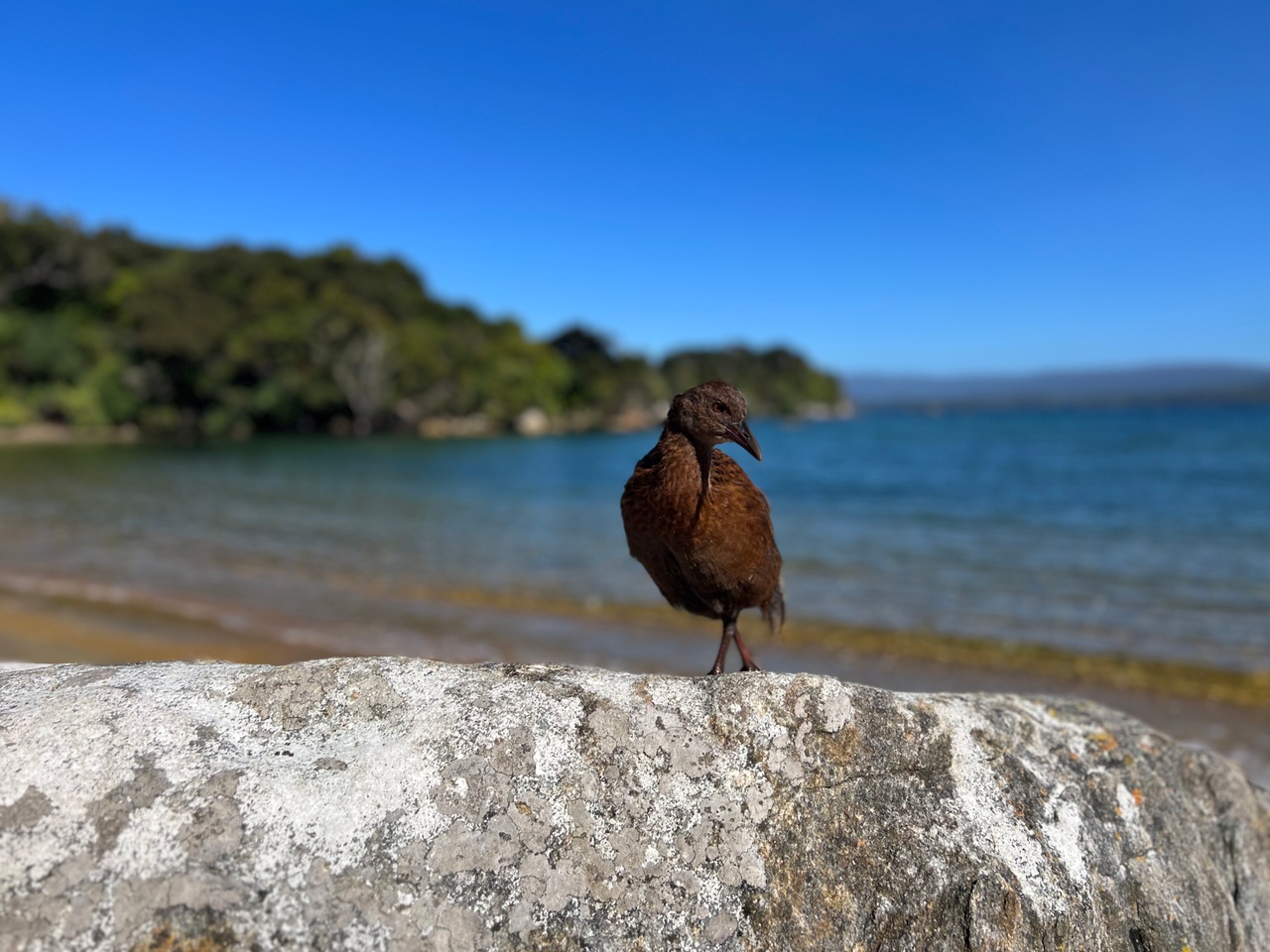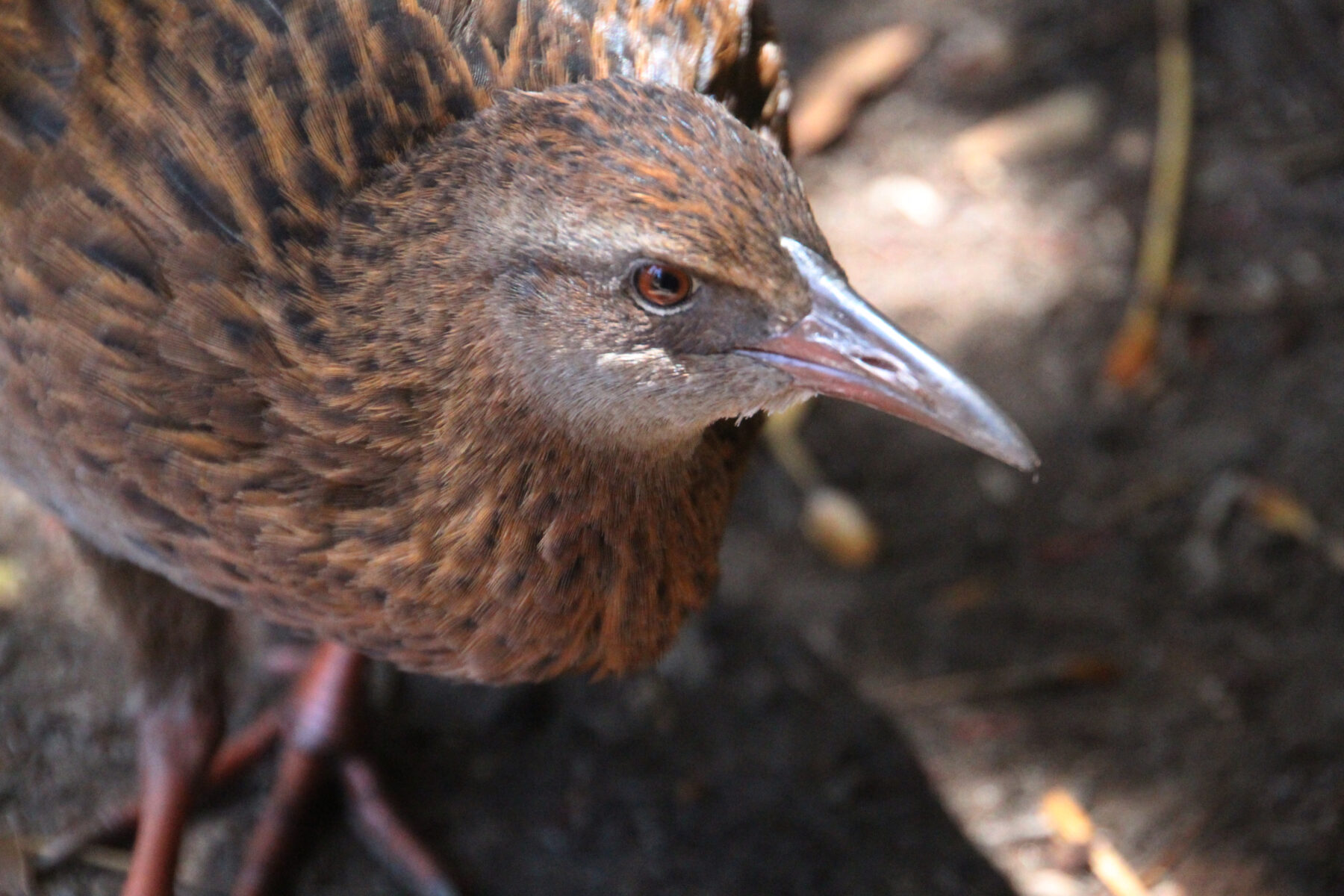Just a few short hours after stepping foot on Stewart Island/Rakiura I have already checked three birds off my ‘must see’ list.
Only metres from the ferry that’s carried me across the blustery Favaux Strait to this southernmost New Zealand community, a group of variable oystercatchers (Haematopus unicolor) is foraging on the foreshore. These endemic coastal seabirds are so incredibly striking with their jet-black feathers, bright coral-pink legs, and vivid orange markings around their eyes, like fluorescent eyeliner.
While continuing along the bay and through the small township of Oban – the only settled area of this remote island 30km south of NZ’s South Island – my attention is drawn to rustling leaves in a small tree just off the footpath. Upon closer inspection, there among the branches is not one, but two tui (Prosthemadera novaeseelandiae). The pair – also endemic to NZ – are nonchalantly going about their business, feeding on the nectar of a native flax/harakeke, one of the country’s most ancient plant species, blissfully unaware of the human admiring them from below. The tui are adorned with deep-blue, green, purple and bronze glossy feathers – a royal-looking plumage that contrasts delightfully with a quirky white fluffy tuft on their throats.
On a high from my tui encounter, I stroll up the hillside to check in to my accommodation – Stewart Island Lodge. It’s not long before I’ve found myself the perfect spot on the balcony, surrounded by garden, overlooking the wonderfully quaint Halfmoon Bay. I stare off into the distance, but my daydream state is broken by a sound coming from the raised garden bed beside me.
A kaka (Nestor meridionalis) has landed. When fully grown, this parrot reaches the size of an average domestic cat so it’s hard not to be impressed by its grand stature. With most of the species’ habitat lost to forestry operations and its ground nests vulnerable to introduced predators, a kaka is a rare sight on NZ’s main islands. This bird, however, has a good stronghold on many offshore islands, where numbers are recovering. This particular kaka has a dominating presence, full of confidence as it stands tall, showing off its big crimson belly.
I knew Stewart Island was famed for its abundance of rare native and endemic birds. After all, that’s why I’m here. But I thought I’d at least need to enter the bush to see them! Yet here I am on day one, having already encountered oystercatchers, two tui, and a kaka – tick, tick, and tick.
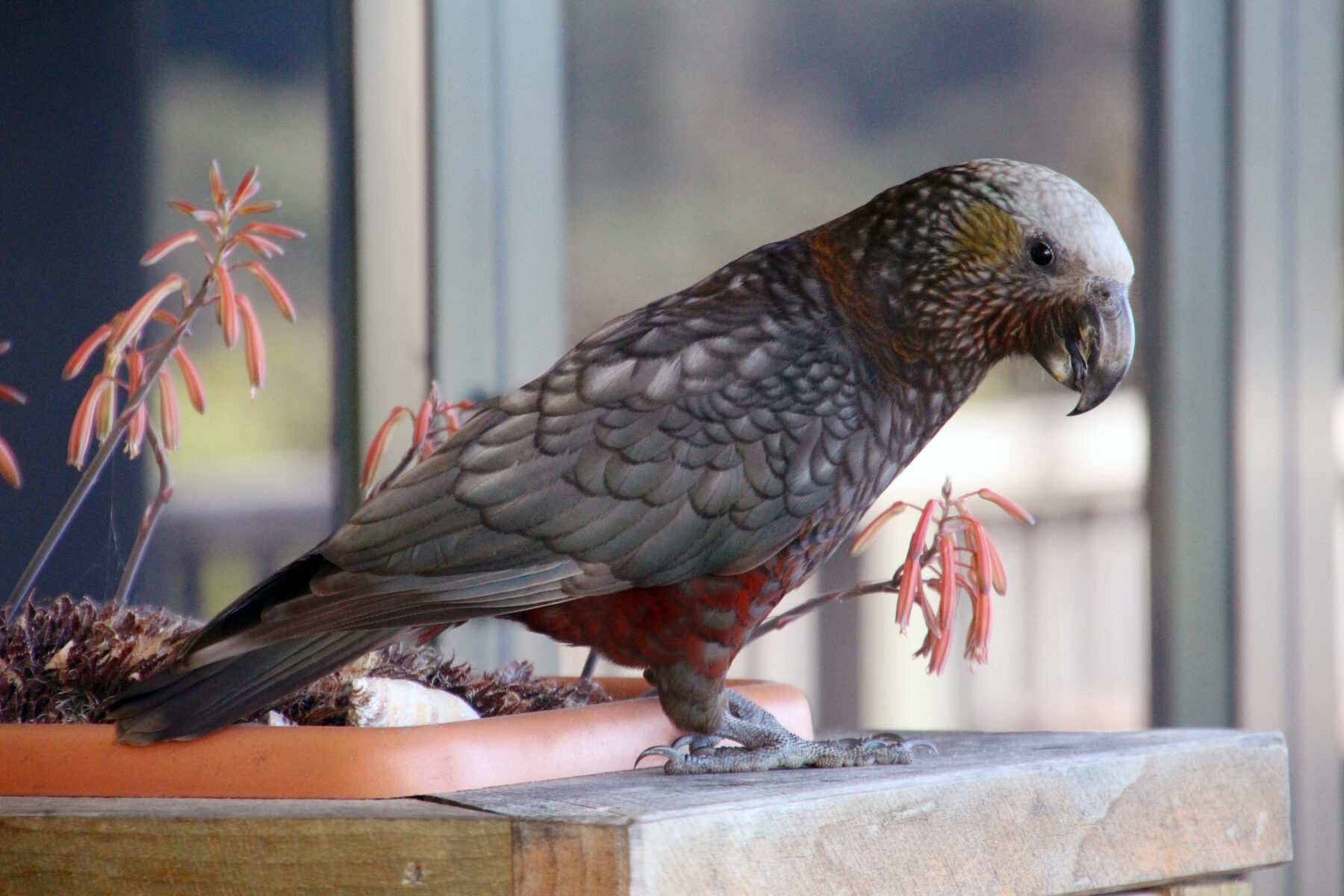
Of the island’s 1570sq.km, 85 per cent is national park. Its human population of 400 is far outnumbered by birdlife, with many of the approximately 130 avian species found here declared endangered or vulnerable nationally. While their mainland counterparts have fallen victim to introduced mammals and marsupials (chick and egg-eating types such as possums, stoats and ferrets) Stewart Island provides a haven from these feral predators, allowing birdlife to thrive. However, despite years of vigorous effort by NZ’s Department of Conservation and local community groups, deer and rats still prevail.
All over the island I see evidence of the dedicated endeavour to eradicate rats – bait stations and traps, marked with fluorescent flags. They’re not pretty, but they’re doing an important job.
After saying goodnight to my kaka friend and retiring for the evening, I begin the next day back at the wharf, where I climb aboard Rakiura Charters’ catamaran Paikea for the first half of my “official” birding experience, a much-anticipated pelagic birdwatching cruise. We skirt the open ocean, pulling into multiple bays and coves along the way, where we see native sea lions (Phocarctos hookeri) and fur seals (Arctocephalus forsteri) either lazing on beaches or cavorting in the shallows.
As we make our way around the tip of the peninsula, our journey is peppered with encounters with Stewart Island shags (Leucocarbo stewarti), (Platalea regia), cape petrels (Daption capense), and brown skuas (Stercorarius antarcticus). Even white-fronted terns (Sterna striata) hover overhead. At one point we’re surrounded by albatross, among the grandest of all birds. There are six species here. Our visitors are a mixed group of of southern royal (Diomedea epomophora) and white-capped (Thalassarche cauta steadi) albatross.
As they bob around the boat, I can only assume they have mistaken us for a fishing vessel with tasty scraps to share. Seeing these magnificent birds up close is a highlight of my time out on the water. Other birds we don’t get eyes on but we do see evidence of, such as the stick-and-seaweed chimney-pot nests in branches overhanging the water’s edge that belong to the native pied cormorant (Phalacrocorax varius).
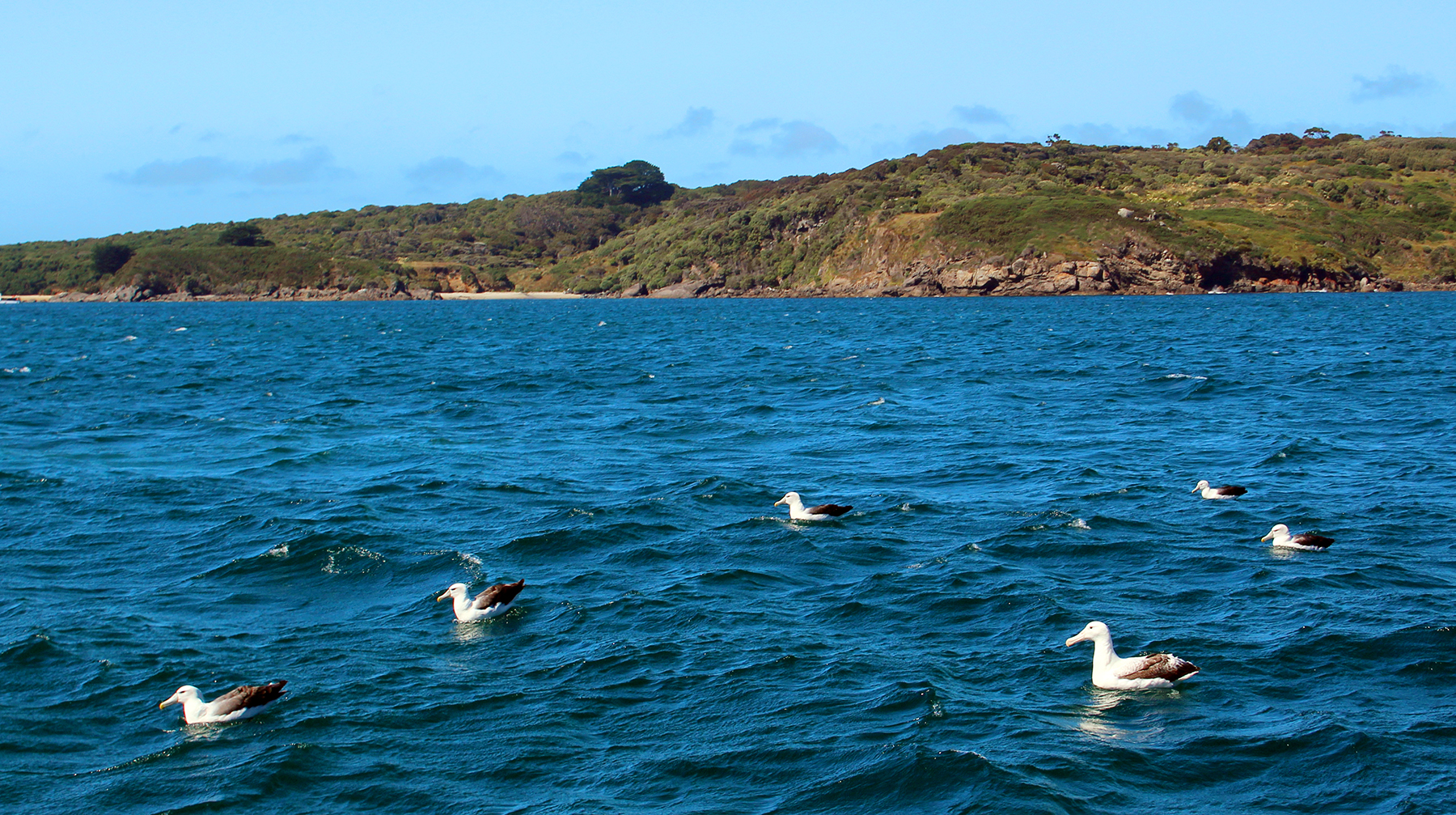
Soon it’s time to say goodbye to our seafaring feathered friends and return to solid ground. I disembark on Ulva Island/Te Wharawhara. Located in the middle of Paterson Inlet/Whaka a Te Wera, it’s the jewel in Rakiura’s crown and a top destination for bird enthusiasts globally. Unlike the main island, where feral deer and rats survive, Ulva is free of any introduced species. Declared a reserve in 1899 and officially pest-free in 1997 after a massive eradication effort throughout the ’90s, this patch of forest protected by a natural moat provides an open-air sanctuary for more than 20 native and endemic bird species that struggle to survive on the mainland.
Here, they live the way all NZ birds once did – without predators and in ancient temperate rainforest. This island was never logged and any introduced plant species have since been removed, meaning Ulva’s flora is as it was hundreds of years ago, before European settlement.
As I wait on the beach for my guide and fellow birdwatchers I hear the distinct calls of NZ bellbirds (Anthornis melanura) – ringing notes that resemble the chiming of distant bells. I can’t see them, but the birdsong keeps me company.
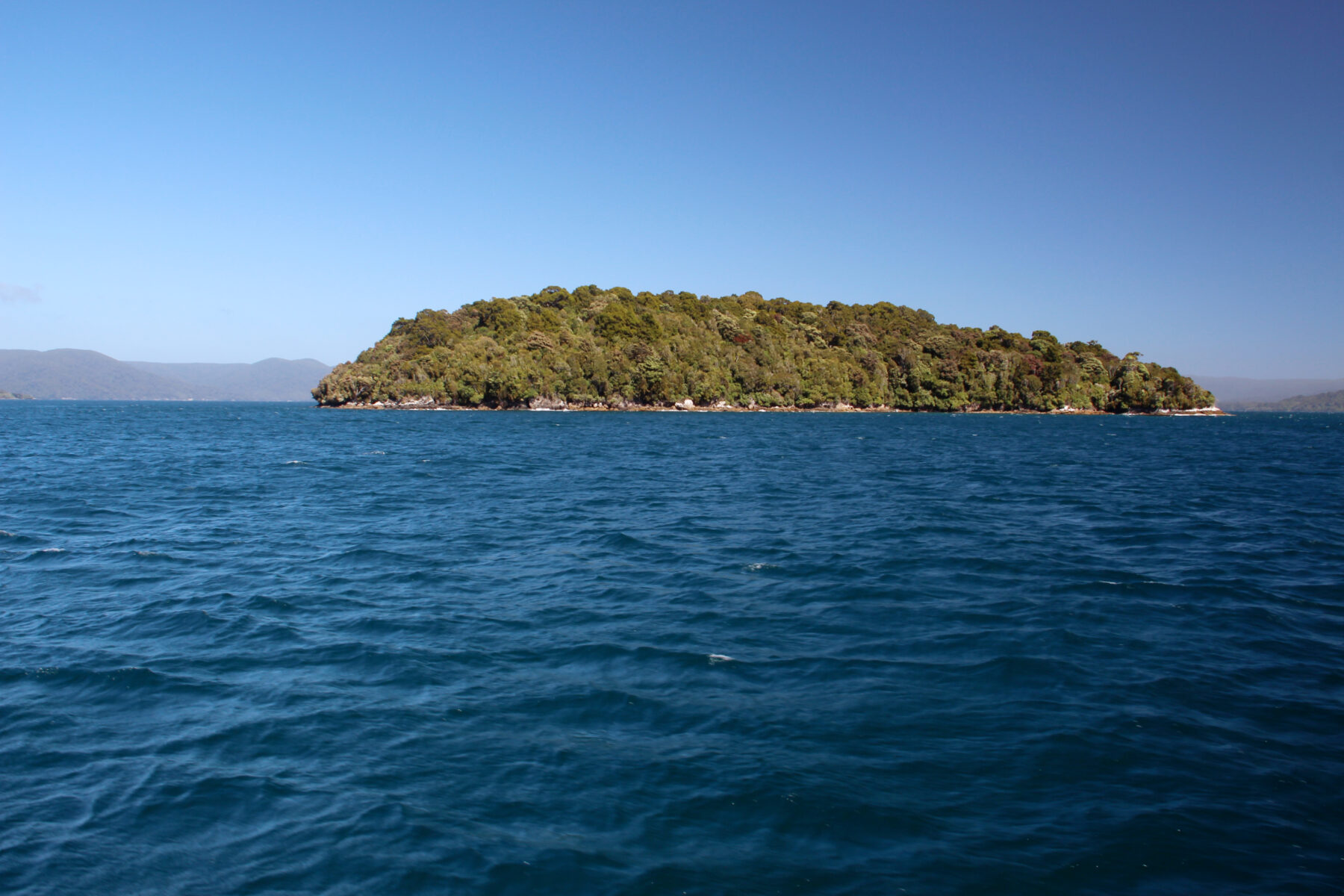
Soon our small walking group of eight has gathered and our guide introduces herself as Ulva Goodwillie. That’s right, my guide for Ulva Island is named Ulva. Surely this can’t be a coincidence. As we make our way from the shore into the forest, I quiz Ulva about her name. It turns out her family has a long history here, so much so that her mother named all her children after different Stewart Island locations.
Admitting that in her childhood she sometimes wished she had a “normal” name, Ulva has since embraced this connection, dedicating her life to preserving and protecting the island. She is a member of the Ulva Island Charitable Trust, works alongside the Department of Conservation, has authored a local guidebook, and – as is the case with the hat she wears today – is the owner and operator of Ulva’s Guided Walks. Talk about living up to your name!
Ulva’s knowledge of this island and the fauna and flora that inhabit it is astonishing. As we zigzag across the island searching for signs of birdlife, she teaches us about the old-growth temperate rainforest that surrounds us. Towering above are ancient podocarpus trees – rimu, totara, and miro. Lancewoods, kamahi and rata dominate the understorey, while ferns, mosses, liverworts, and lichens cloak the forest floor. One fern here, a Tmesipteris species, is unchanged since it appeared 400 million years ago.
There are even five different species of orchid on the island. Because they’re arboreal, you need to know where to look. Fortunately, Ulva points them out along the way. Many of these plants also have a symbiotic relationship with the local bird species, ensuring each other’s survival.
Of the many rare and endangered birds thriving on Ulva, key species include the black South Island saddleback (Philesturnus carunculatus), which has a chestnut-coloured ‘saddle’; the sparrow-like brown creeper (Mohoua novaeseelandiae); the striking yellowhead (Mohoua ochrocephala); the flightless Stewart Island weka (Gallirallus australis scotti); the fabulously photogenic trio of the Stewart Island Robin (Petroica australis rakiura), Tomtit (Petroica macrocephala), and Fantail (Rhipidura fuliginosa); the morepork owl (Ninox novaeseelandiae); the NZ wood pigeon (Hemiphaga novaeseelandiae); the red (Cyanoramphus novaezelandiae) and yellow (Cyanoramphus auriceps) crowned parakeets, the NZ bellbird (Anthornis melanura); and the itty bitty grey warbler (Gerygone igata) and rifleman (Acanthisitta chloris), each weighing in at no more than 6 grams.
Birds of Stewart Island / Rakiura
Illustration credits: Matilda Bishop
Among my group of twitchers, each has their own species wishlist that they are keen to tick off on this excursion. Ulva goes above and beyond to find every single one. She hunts for clues at each step of our bushwalk, listening to the many sounds of the forest, looking for any movement, and analysing every birdcall. Her enthusiasm is remarkable. She hosts these guided walks multiple times every week, yet she still gets a twinkle in her eye every time she knows she’s hot on the heels of a certain species. And when she finds it, she still gets giddy with excitement.
There’s one bird we encounter multiple times – the apparently fearless quail‑like Stewart Island weka. I’m surprised by its nonchalant attitude towards humans. Ulva tells me that this has developed as a result of having no predators and that each generation of birds on the island is more confident than the last, a testament to the safe haven provided.
But maintaining this conservation sanctuary is a big job, shared by many – including the Department of Conservation and the Ulva Island Charitable Trust. Every vessel mooring at the island must be checked for seeds and any sign of rats. Even the gravel used to make the walking paths was washed before coming here.
Keeping rats from resettling is a constant battle. On average, one rat per year manages to make it to the island. Some hitch a ride, others swim. Just weeks before my visit, a pregnant rat was found just above the wharf. Traps are used here as on the mainland. But Ulva Island also has a special weapon – a specially trained rat-sniffing dog.
After an afternoon spent birdwatching, bushwalking and beach-hopping, it’s time for me to leave Ulva. As I walk along the timber jetty towards the water taxi that will return me to Oban, I look back, feeling privileged that I was able to spend just a little time in this precious patch of preserved wilderness, and assured, knowing its future is in safe hands.
Candice joined Ulva’s Guided Walks’ Birding Classic Package, as a guest of NZ Tourism.

